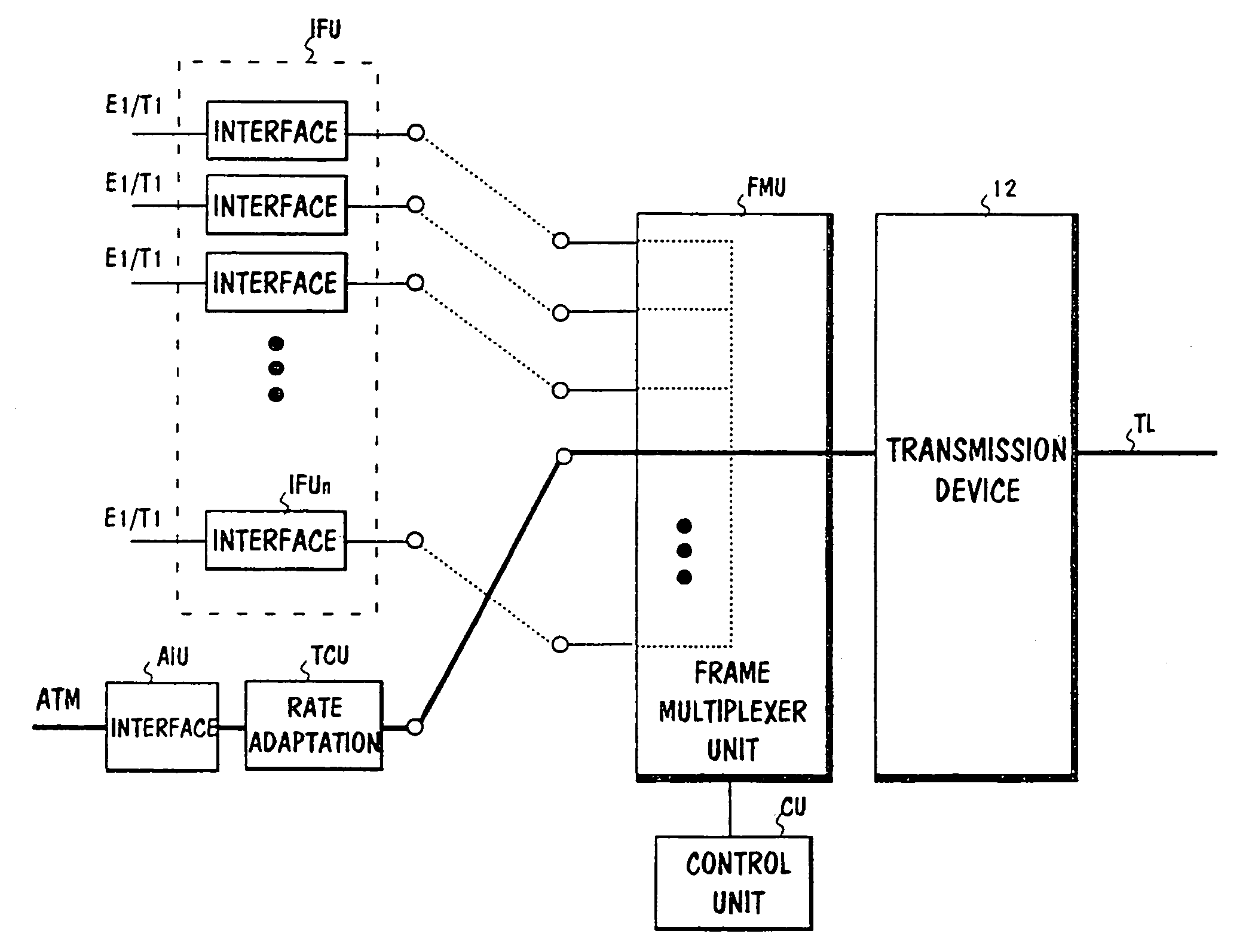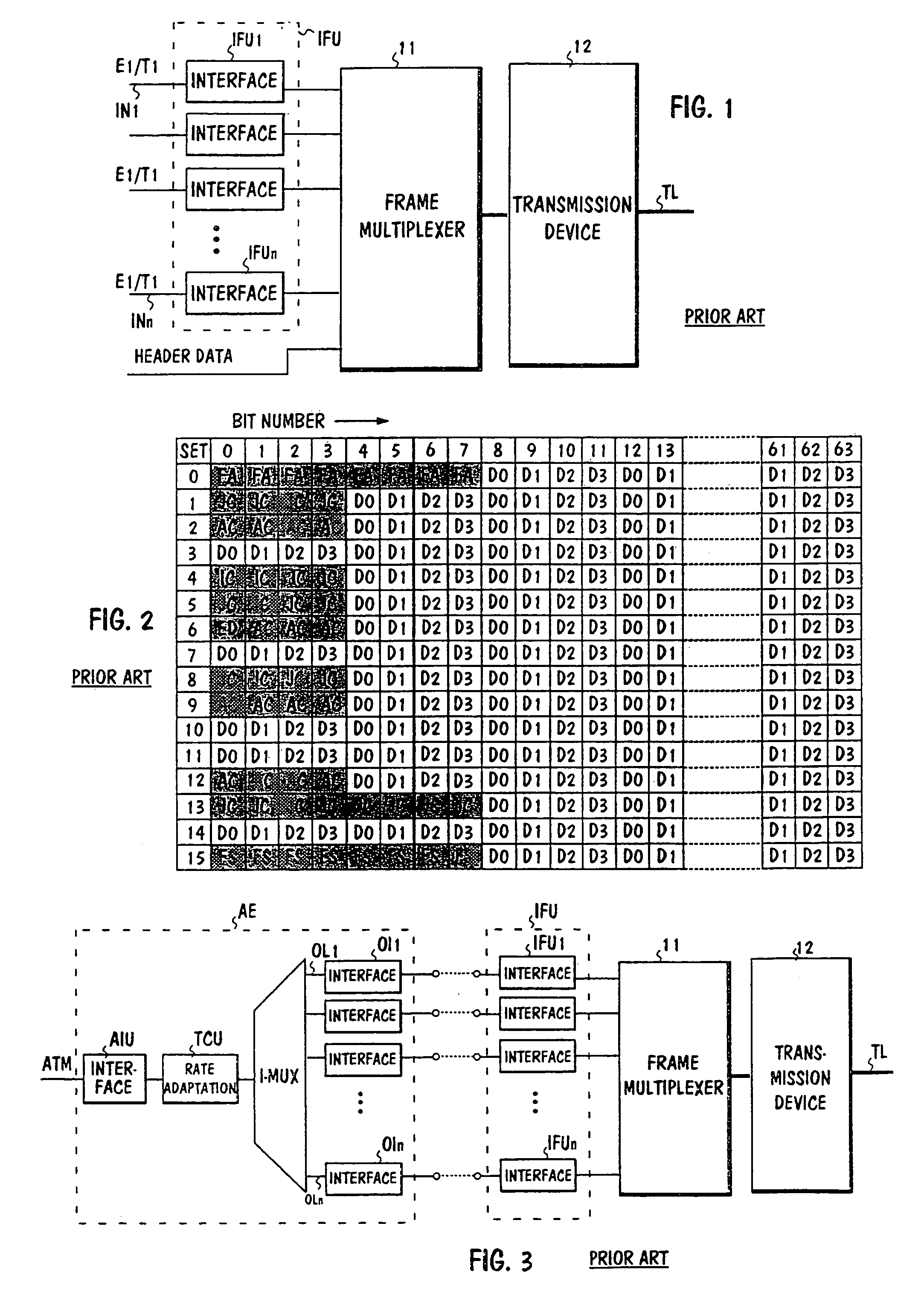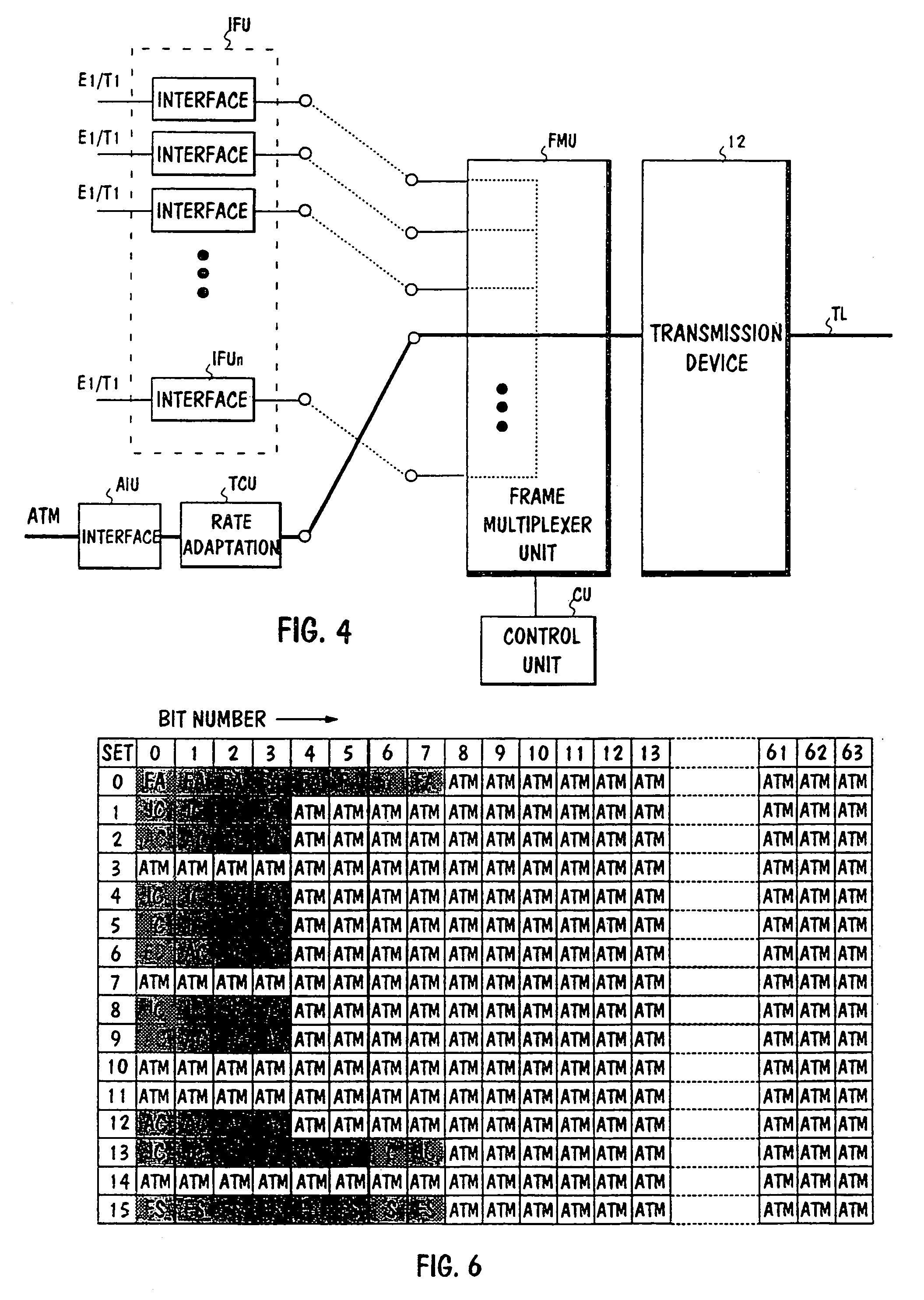Multiplexing in a PDH telecommunications network
a telecommunications network and multi-channel technology, applied in data switching networks, frequency-division multiplexing, time-division multiplexing selection, etc., can solve the problems of link or connection reducing the solution, consuming space for separate atm adaptation elements, and reducing the number of cables and interfaces internal to the network element, saving transmission capacity, and simplifying installation and commissioning work
- Summary
- Abstract
- Description
- Claims
- Application Information
AI Technical Summary
Benefits of technology
Problems solved by technology
Method used
Image
Examples
Embodiment Construction
[0030]FIG. 4 is an illustration of the principle of the solution of a network element in accordance with the invention. The frame multiplexing unit FMU of the network element is implemented in such a way that alternatively either PCM signals in accordance with FIG. 1 in a known manner, an ATM cell stream through an interface unit and a rate adaptation unit as described above, or both PCM signals and a cell stream can be connected thereto. When cells are transferred, the cell stream is connected from the output of the rate adaptation unit TCU directly to one input of the frame multiplexing unit. The outbound bit rate to the link is the same in all cases, since the same frame structure is used in all cases.
[0031]If only PDH signals are connected to the frame multiplexing unit FMU, they are multiplexed in a known manner into a serial signal to the transmission link TL. This has been denoted with broken line in the figure. If, on the other hand, only an ATM cell stream is connected to t...
PUM
 Login to View More
Login to View More Abstract
Description
Claims
Application Information
 Login to View More
Login to View More - R&D
- Intellectual Property
- Life Sciences
- Materials
- Tech Scout
- Unparalleled Data Quality
- Higher Quality Content
- 60% Fewer Hallucinations
Browse by: Latest US Patents, China's latest patents, Technical Efficacy Thesaurus, Application Domain, Technology Topic, Popular Technical Reports.
© 2025 PatSnap. All rights reserved.Legal|Privacy policy|Modern Slavery Act Transparency Statement|Sitemap|About US| Contact US: help@patsnap.com



